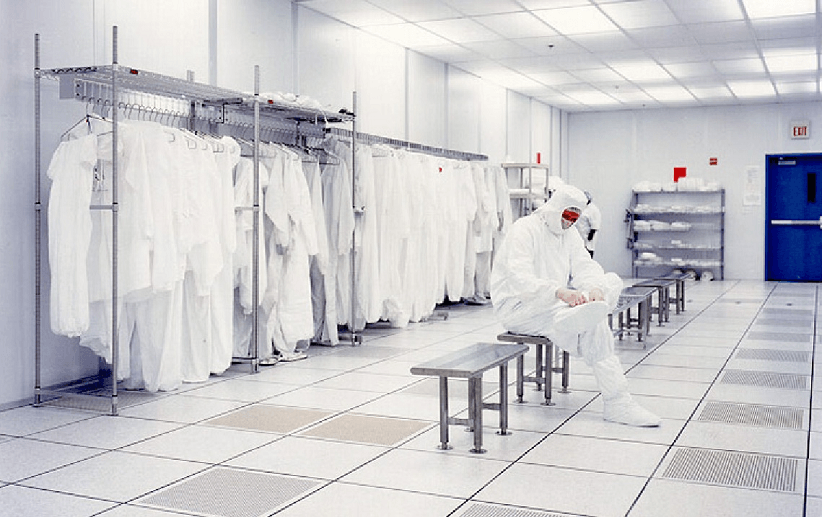Of the many potential sources of contamination in cleanrooms and other clean manufacturing environments, none is more persistent, pervasive or pernicious than the human beings who occupy them.
There are many possible sources of contamination of the cleanroom environment. Equipment, structures, and surfaces can generate particles through friction, heat, exhaust, outgassing, and static electricity. Incoming production components may introduce contaminants. Still, it is the people working in the cleanroom that generate the most particles.
Of the many elements of cleanroom operations and processes, humans are the easiest to control, yet contribute the most contamination.
Cleanroom Management Programme
While non-particulate contamination (nonvolatile residue or airborne molecular contamination, for example) is a concern in many applications, the fundamental aspect of the cleanroom environment is an effective cleanroom management program that keeps the environment free of airborne particles.
As cleanroom operators are working, they generate millions of particles with every movement. Schlieren thermal images show particles emitted from the human body. Particles migrate up through the cleanroom apparel toward the head and fall down the legs during cleanroom activities.
Microorganisms
Bacteria, molds, and yeast are viable organisms which are chemically active. Byproducts of their growth and replication can cause a variety of contamination in the cleanroom, based on the nature of the chemicals released during generation. Humans also release elemental chemicals that can cause contamination:
- Spittle: potassium, chloride, phosphorus, magnesium, and sodium
- Dandruff: calcium, chloride, carbon, and nitrogen
- Perspiration: sodium, potassium, chloride, sulphur, aluminium, carbon, and nitrogen
- Fingerprints: sodium, potassium, chloride, and phosphorus
Follow the Protocol
Consequently, a critical component of cleanroom management is strict adherence to protocol. Cosmetics are prohibited because in addition to their gross particle generation, cosmetics release iron, aluminium, silicone, carbon, titanium, magnesium, potassium, sulphur, and calcium.
“Just as humans are the greatest potential contamination risk, they are also the greatest resource for contamination control.”
A thorough, comprehensive training program detailing all aspects of cleanroom management will empower the cleanroom operators to control the degree of contamination during the production process.
Operators Must Understand The Risks
As mentioned earlier, any activity by the cleanroom operator generates millions of viable and non-viable particles. Consequently, it is imperative to limit talking and actions in the cleanroom to only those required for the manufacture of the product. Running, horseplay, and other non-professional activities are not permitted. Other behavioural requirements include, but are not limited to, the following:
- Smoking is not allowed inside the manufacturing facility including all cleanroom areas. Smokers release Tar particles for at least one-half hour after smoking one cigarette.
- Nothing is allowed inside the cleanroom complex which is not required in the cleanroom manufacturing process. This includes personal items such as jewellery or keys, cosmetics, tobacco or matches in any form, and food or drink in any form. Hair may not be combed in the cleanroom gowning area.
- Only cleanroom compatible ball-point pens are allowed inside the cleanroom for recording data on cleanroom compatible paper and clipboards.
- While working in the cleanroom, mannerisms such as scratching or hand-rubbing.
- Cleanroom personnel may not access the inside of the cleanroom uniform.
- The use of facial tissues is prohibited in the cleanroom. If one must use a cleanroom compatible non-linting tissue, it must be used only in the gowning area and disposed appropriately in waste receptacle.
- All doors must remain closed when not entering or exiting. Emergency doors may be alarmed with a visual and audible alarm to enforce compliance.
We hope that this article has provided you with some evidence of how people are the number contributors to cleanrooms becoming infected with nasty microbes.
